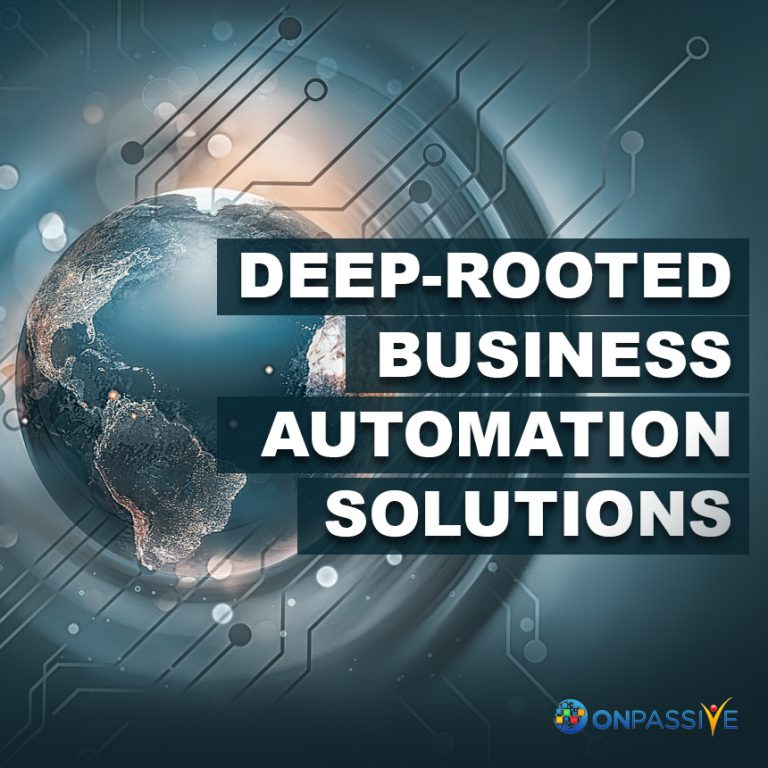
With rising market uncertainties and transformations, marketers face challenges in staying connected to customers and focusing on business growth. To succeed in the long-run, marketers will need to focus on the most pressing issues rather than spending more time on day-to-day tasks. Also, surviving in today’s competitive world requires companies to utilize available resources and capital and make strategic decisions efficiently. This is where the need to leverage ONPASSIVE automation tools comes into play.
To start your marketing automation journey, you’ll require research, preparation, and plenty of communication. If done well, the business automation tool will reward you with higher productivity, improved process, reduced human error, and increased staff satisfaction. From preparation to implementation, we have outlined the complete steps to help you start your marketing automation journey with ONPASSIVE.
What is Business Automation Process?
The business automation process is defined as the method of using technology to automate business processes in an organization. This involves automating manual day-to-day tasks such as sales prioritization, customer communication, email communication, campaign tracking, social media posts scheduling, and many more.
Automation processes are implemented to cut costs and increase overall productivity in an organization. Moreover, automation processes are utilized by businesses to reduce physical labor and perform operations at minimal time.
How to Start Your Business Automation Journey?
1. Identify your goals
Setting a business goal is the key to achieving business success. Like setting your organizational goals, you must devise automation strategies or set automation goals as well. So, the initial process is to identify the processes that you want to automate. To do so, consider the capital and resources required for performing a manual task. Also, identify processes that are time-consuming and understand areas with low productivity.
In addition to this, list all the tasks that are time-consuming and require more resources. While automation allows businesses to streamline and automate multiple tasks and processes, it’s always better to start small by automating processes that are likely to bring about more benefits in the future. Consider these questions:
- What are the business challenges that your organization is trying to solve by automating processes?
- What are the top priorities of your organization?
- What are the risks that you will encounter if you don’t increase your level of automation?
2. Evaluate Chosen Processes
To execute the automation process, you must be clear on business objectives and buyer personas. Once you choose the processes to automate, the next step to start your automation journey is to analyze the issues in the current processes thoroughly. To identify the problems in the existing processes, you need to understand the processes occurring in the automation precisely.
Once you have identified issues in the current process, you’ll need to streamline and fix processes that are not working. This is a critical process to take care, as automation tools cannot fix broken processes or workflows. Additionally, you need to evaluate the risks of implementing automation tools and technologies in your business processes and adopt risk mitigation strategies.
3. Choose Your Automation Tools
Based on your business goals and current process evaluation, you can now understand which sections gains benefit from your sales funnel through automation tools. Don’t go for automating all processes at once and opt for automation tools and technologies that align directly with your goals. In this step, you must also decide on whether to build an automation tool on your own or to partner with an established AI-based automation tools provider like ONPASSIVE to implement an automation service.
Opting for a third-party service provider is often the best approach as it ensures to save your time and reduces the stress. Also, consider:
- Total capital to leverage automation tools
- Availability of resources to execute automation functions
- Security and stability of automation tools
- The need to integrate with other technologies to perform automation
4. Implementation
In this step, you will need to set up your triggers and start to automate troublesome processes. It is recommended to start with a single process that presents the least amount of risk. And, once you are satisfied with the stability of your automation system, you can add more processes. Also, marketers need to continuously analyze their audience behaviors to make alterations in automation processes accordingly.
Summary
As businesses and technology continuously evolve, ONPASSIVE automation tools can help to future proof your organization in multiple ways. With a streamlined workforce and efficiency, employees can focus on high-value tasks rather than spending more time on day-to-day tasks.
Moreover, AI-based marketing automation tools can enhance employee retention and improve customer satisfaction and experience. With ONPASSIVE automation tools, businesses across all sectors can quickly shift from manual processes to more automated strategies in a goal-oriented way.



Shirley Dotson
4 years ago